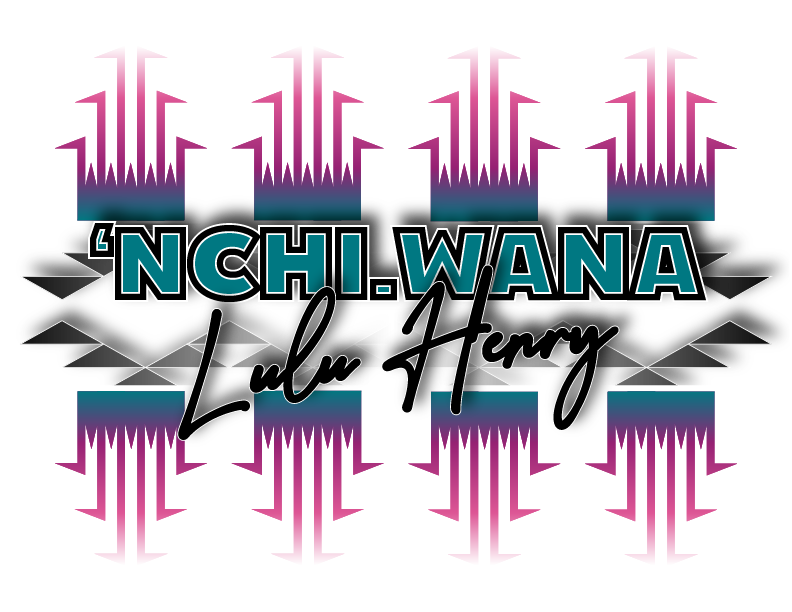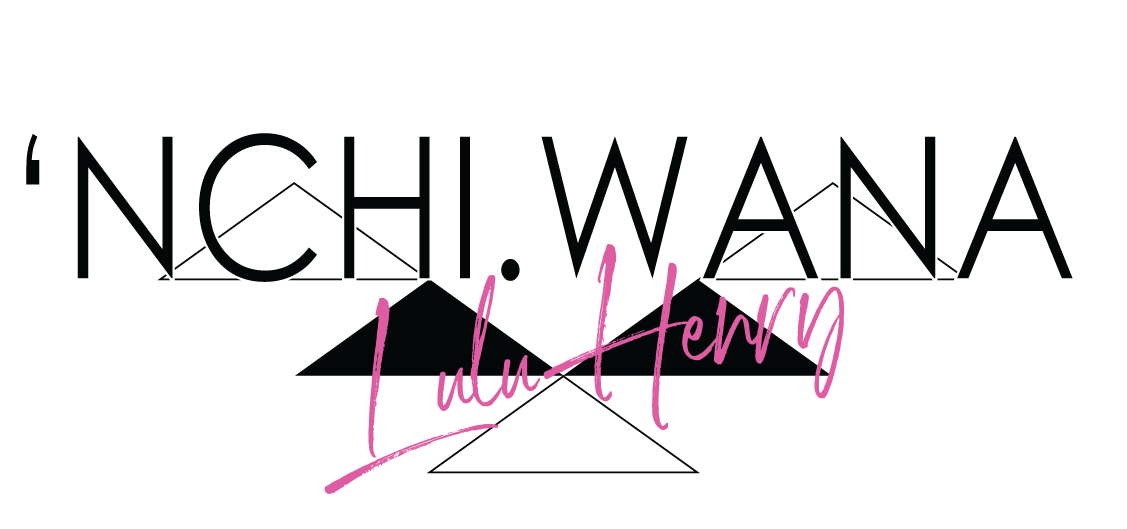Meet the Artist - Lulu Henry
‘iínim we’niíkt weés Wetalu Henry kaa nimiípuutímtki wées ‘alíwtalaliktnacan’may. My name is Wetalu Henry and my Indian name is Winter Sunset.
Wetalu Henry is Nimiipuu and Warm Springs Paiute. Her Indian name is alíwtalaliktnacan’may which translates to ‘Winter Sunset’. From her late Qaaca (maternal grandma), the late Priscilla Pinkham, she inherited this name. She is an accomplished artist of many forms—a cultural keeper, seamstress, beadworker, basketweaver, educated scholar, graphic artist, businesswoman, and mother. Lulu Henry founded and owns 'Nchi.wana by Lulu Henry, an online store that promotes cultural resilience through fashion, beauty, and purpose. Among her other accomplishments, she founded and created Powwow Camp, which offers cultural dance instruction and healthy movement to Indigenous youth. In her role as a cultural instructor, she integrates traditional dance and art practices and systems into teaching basic skills and practices of the plateau tribes. In addition to running her own E-commerce business for three years, Wetalu has been practicing traditional arts since she was eight years old. Over the last year, up-cycled fashion has become one of her favorites. Visit her website and social media platforms to learn more.
What does ‘Nchi.wana mean?
As salmon was an important staple for the Warm Springs bands who lived along the Columbia’s tributaries, they built elaborate scaffolding over waterfalls which allowed them to harvest fish with long-handled dip nets. The Sahaptin word ‘Nchi.wana translates to “The Big River.” The Big River refers to the Mid-Columbia River that forms the spine of the land and serves as the nucleus of it’s ecosystem. It is located between Celilo and Priest Rapids of Oregon and Washington. The Yakama, Umatilla, and Warm Springs tribes survived among ‘Nchi.wana by virtue of detailed knowledge of the water and land since time immemorial. Although, I was born and raised as Nimíipuu, I still have a strong connection with my Warm Springs Paiute people. ‘Nchi.wana represents all elements of who I am as an Indigenous person as I honor the strong fisherman of my family and the traditional trading sites of the plateau people. When my people hear this, they will understand the significance behind the name and I hope to strengthen inclusivity and relationships between all tribal and non-tribal alike who share a strong admiration and respect for our culture.
To learn more about, please visit my social media platforms listed below.
Indigenous People’s March 1.18.19.
I marched in honor of those that could not join us, I march for Indigenous women all around NDN Country, and I marched to strengthen our numbers in representation because we matter.
Nez Perce Tribal Tribune - Local Beadwork Artists
By: Yvette Whitman
Who are you?
‘iínim we’niíkt weés Wetalu Henry kaa nimiípuutímtki wées ‘alíwtalaliktnacan’may.
My name is Wetalu Henry and my Indian name is Winter Sunset. I carry the namesake of my late Qáaca Priscilla Pinkham as it was passed to me to continue her legacy.
How old were you when you took an interest in beading?
I first started learning how to bead on a loom when I was 8-years old. Then, I learned how to bead lazy stitch and straight stitch when I was 13-years old.
Who taught you?
My mother taught me; she cut out a heart-shaped canvas piece and told me, “I’ll show you once. Here is your canvas piece and here are my bead supplies. Pick any colors you’d like and I’ll show you how to get started.” Since then, I fell in love with the beads and thread and kept practicing, working on my own regalia while continuing to improve with every detail.
What was behind your style and inspiration of color?
My inspiration came from my Qáaca, she was a magnificent bead worker. I remember as a child, I watched her bead and never with a designed outline, her freestyle skills were phenomenal. I have always wanted to master her level of skills. After multiple years and numerous projects, I can also freestyle, but with more of a contemporary approach. I like to sit with my beads and pellon and first of all, offer thanks and appreciate this gift from our creator as this ability was borrowed to me. It takes a few moments for colors and designs to reveal themselves and I’ll adjust both style and color as I progress further into my project.
How do you feel when people come to you and say they recognize your work?
I feel absolutely honored to have reached people all over NDN Country and beyond. If people are recognizing my work, I am reassured that my responsibility as a cultural bearer has been impactful. All this knowledge I’ve acquired is not mine to keep and as artists, it is our responsibility to ensure cultural preservation. Thanks to social media, we as artists have the opportunity to share the stories our projects narrate with Indigenous and non-Indigenous people alike. I’m fortunate to have some of the most amazing friends, family, supporters, and followers who believe in persistently supporting small Indigenous businesses.
Do you sell your items, if so when and where?
I’ve been consistently selling most of my inventory on social media platforms; Facebook and Instagram. I make posts with the my most recently available items, but now that I am preparing to launch my brand new website, I will be selling exclusively from there. Stay tuned.
Do you work or go to school, if so where?
Currently, I am working part-time as a 2020 Census/Get Out The Vote - Social Media Outreach Specialist with Western Native Voice partnered with the Nez Perce Tribe. I just recently graduated from Lewis-Clark State College with my Bachelors in Psychology and minor in Nez Perce Language and Native American Studies in May 2019. I’d like to pursue a master’s degree, but I am still undecided in what.
Nimíipuu meets the Basílica del Voto Nacional, Ecuador. Ribbon skirt created by yours truly.
My journey through research has given me the opportunity to experience a 3-week Anthropology field research program where the objective was to intersect cultures through place-based learning and strengthen cultural competency in Otavalo, Ecuador.
A beautiful garment piece I created decorated with hues of pink and soft blue satin ribbon and satin applique work. This piece was dedicated for a relative’s wedding.





